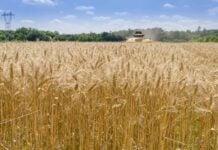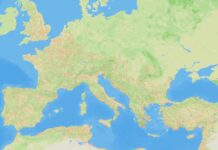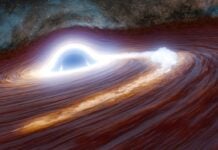Chitin, a naturally occurring polymer found in crustacean shells, insect exoskeletons, and fungal cell walls, holds significant promise as a building block for bioengineered materials. Researchers have now gained a more detailed understanding of how water interacts with different forms of chitin at the nanoscale, and how this impacts the material’s properties and potential applications.
The Role of Water in Chitin’s Behavior
The nanoscale structure of chitin strongly influences its chemical and mechanical properties. When chitin is hydrated—meaning it’s surrounded by water—the way water molecules organize themselves around the material can profoundly impact its behavior. Until now, the specific structures of this “hydration layer” have remained largely unclear, limiting our ability to fully harness chitin’s potential.
A Collaborative Effort to Unravel the Mystery
A team of researchers from Kanazawa University’s Nano Life Science Institute (WPI-NanoLSI), collaborating with experts from the University of Tokyo and Aalto University in Finland, has made significant progress in elucidating these structures. Using advanced techniques—three-dimensional atomic force microscopy (3D-AFM) and molecular dynamics simulations—they were able to observe and model how water molecules arrange themselves around different forms of hydrated chitin.
Two Forms of Chitin: α and β
Chitin naturally occurs in two main crystalline structures: α and β. The primary difference lies in how the long chains of molecules are aligned: in the α form, they run antiparallel, while in the β form, they run parallel. This seemingly small difference has a surprisingly large effect on how water interacts with the material.
3D-AFM: Visualizing Water’s Organization
Atomic force microscopy (AFM) is a technique used to map the surface of materials at the nanoscale. The researchers employed a modified version of AFM, called 3D-AFM, which allowed them to not only visualize the shape of the chitin nanocrystals, but also to analyze the three-dimensional arrangement of the surrounding water molecules.
Unique Structures in β Chitin
The team’s analysis revealed a high degree of order in the β form of chitin, which has been less thoroughly studied in the past. They observed occasional breaks in this order, resulting in a pattern that “resembles partially bitten corncobs or a brickwork pattern.” Notably, the structural patterns extend throughout the entire chitin fiber, not just on the surface.
The Impact of pH Levels
The researchers also investigated how different pH levels—acidity or alkalinity—affected the structures of the hydrated chitin fibers. They found that the high level of crystallinity observed was maintained even in acidic buffer solutions with a pH of 3–5.
α vs. β: Water’s Influence on Reactivity
One of the most significant findings of the study was the difference in water structure and hydrogen bonding between the two crystalline forms of chitin. The grooves in α chitin are larger, allowing for greater water accumulation, effectively creating a “hydration barrier” that hinders interactions with ions and molecules, making it less reactive. In contrast, the structured hydration environment of β-chitin lowers the energy barrier for enzyme access and reaction.
These insights could explain why certain enzymes react with chitin in only one crystalline form and not the other.
Implications for Bio-Based Applications
This new understanding of water’s role in chitin’s properties has important implications for the development of bio-based technologies. The researchers suggest that this knowledge could inform the creation of bioprotonic applications —devices that rely on proton transport—and hydrogels because the hydration layer influences ion and molecular diffusion. The nuanced understanding of the hydration layers will enable the optimization of chitin-based materials for specific applications, unlocking their full potential in areas like biomedical engineering and sustainable materials science.






























